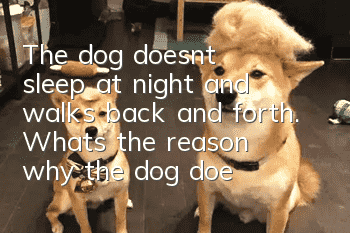How to train the Tibetan Mastiff's character?

There is a saying in school teaching that students should be taught in accordance with their aptitude. Some people are better at art and become art students, and some people are better at sports and become physical education students. So can Tibetan Mastiff dog training be trained according to different personalities? The answer is yes.
Tibetan Mastiff
1. Excitable dogs
The characteristic of this kind of dog is that it is excitable. This should be utilized and mobilized during training, and its restraint should be cultivated at the same time.
2. Lively dog
This kind of dog is characterized by strong excitatory and inhibitory processes, flexible switching, and rapid formation of excitatory and inhibitory reflexes during training. Improper training methods can easily produce bad connections, so special attention should be paid to the methods and corresponding methods should be adopted.
3. Quiet dog
The characteristic of this kind of dog is that it is not easy to be excited and can often adapt to different environments. However, the reflex from stillness to movement is slow to establish, so training should be focused on it.
4. Passive defense reactive dog
This kind of dog is characterized by being easily frightened, showing strong resistance to punishment and reprimand during training, and often trying to escape. Therefore, Dongguan Weijing Dog Industry reminds you to have a good attitude during training, give more rewards, and pay special attention to training fear. For dogs that are only afraid of animals, fear "treatment" can be performed after completing the first stage of training.
5. Distracted attention type
This type of dog is easily affected by environmental changes during training. For this type of dog, you should first become familiar with the venue before training. Get more exposure to new environments and increase the time and place for walking your dog.
6. Dogs with strong food reactions
This kind of dog easily accepts food rewards, and food can mobilize motivation and consolidate training results. But if it is a police dog, it should also be trained to watch other people.
7. Fierce and aggressive dogs
This kind of dog is basically a highly excitable dog. It is necessary to appropriately strengthen the mechanical stimulation to exert its inhibitory process. Strict requirements must be followed in management training, and attachment, obedience and biting training should be strengthened to make full use of their strengths. But be careful not to bite people or animals indiscriminately. For a small number of ferocious and timid dogs, exercise should be strengthened to prevent excessive stimulation so that the dogs can gradually become bold. In addition, you may also encounter other types of dogs. The training principle for treating them is to maximize their strengths and avoid their weaknesses, and skillfully apply conditioned reflexes and unconditioned counter-stimulations.and training in a gradual improvement method.
- How to treat urinary tract stones in dogs? Dogs may need surgery!
- What should I do if my dog has no milk? The owner should check quickly and don’t let the puppies starve to death.
- Dog’s anal gland odor, please note that this is a sign of your dog’s health!
- What are the symptoms of dog pain? How to detect dog pain early
- How to make your dog like to eat dog food Four ways to make your dog fall in love with dog food
- Can dogs digest peach pits if they eat them? Can dogs digest peach pits if they accidentally eat them?
- How to protect your dog’s food? Teach you tips on training your dog
- Why do dogs defecate everywhere? How can dogs stop defecating everywhere?
- What should I do if my dog has lupus? Immune system diseases should not be underestimated
- If your dog's hair is cut and the skin is cut, the flesh is exposed. If the dog's hair is accidentally cut and the skin is cut, it must be disinfected immediately.



